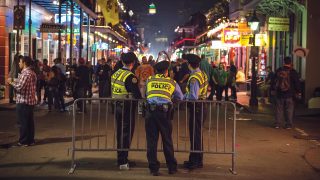
Thousands of takes on how to improve policing over the past 12 months have called for additions to the curriculum, like de-escalation or empathy training. Those certainly have value, but there is a larger concern not getting nearly as much (or the right kind of) attention. It’s time for a different, more productive approach to mental health.
Large agencies have psychological services personnel on staff or on-call, but they spend a good portion of their day trying to connect with people who, generally speaking, don’t want to see them. Additionally, some chiefs may be concerned about the presence of therapists or too great a focus on emotion, and there is often a negative association of seeing the therapist after an OIS. Officers and leaders walking the other way to avoid friendly conversation in the hall do not help create an environment where healthy relationships with mental health professionals are the norm.
According to Dr. Robert Sobo, director of the Chicago Police Department EAP, licensed clinicians must work hard to become familiar, trusted and embedded in the culture of their department. “Officer wellness should be built around a team approach where department members become responsible for the well-being of themselves, each other and their families,” Sobo explains. “Stigma is a cultural component, so ultimately, it’s the officers who make up the culture that have to change their daily shared habits for stigma to decline significantly.”
Some of the current methods to address policing’s mental health challenges include mandatory classes to increase awareness and post-incident debriefing with mental health professionals. Progressive agencies are also leaning in on robust wellness policies. These can all incrementally create better environments for officers, but the data shows they may not be significantly effective because police suicide is also on the incline. There is a problem, and the seemingly impenetrable stigma around mental health isn’t helping solve it.
Why are well-intentioned efforts to improve officer mental health falling short?
To create better mental health interventions, we need to address human physiology: It’s critical to understand how stress impacts our cognition and behavior to design more targeted and successful interventions. Our brains are constantly managing a complex balancing act between the prefrontal cortex that helps us solve difficult problems and the limbic system that helps us react quickly and instinctively. That balance can shift dramatically when the brain gives priority to the freeze-fight-flight stress response in our limbic system, directly impacting actions requiring our prefrontal cortex.
While instinctive response may happen nearly instantly in response to a stressor, rebalancing the nervous system post-encounter requires both time and strategy. This is why officers have to factor time for nervous system reset into the job, especially between high-stakes encounters, to rebalance our physiology, and consequently, psychology. Without interrupting that limbic response, we are more likely to carry it over throughout the rest of our shift and then take it home at the end of the day.
What can be done?
Use the tools you already have more efficiently: Almost all agencies have use-of-force training, often with a simulator. “Simulator scenarios are designed to be realistic to the point that they can be stressful, no matter what level of experience an officer has,” explains Robert McCue, general manager for MILO, a simulation training systems provider for government, military, law enforcement and police agencies. Having participated in decades of simulation training with agencies around the world, McCue has observed that “officer reactions range from satisfactory to highly proficient to downright surprising and sometimes quite inappropriate.”
Suppose, in a difficult and complex simulation training scenario that has options for the use of force, an officer starts laughing unexpectedly after accidentally selecting lethal force and engaging what turned out to be a civilian bystander or experiences a strong and unintended physical reaction like a jump. A reaction of this kind doesn’t necessarily mean they enjoyed the experience. Quite the opposite — a strong or inappropriate reaction often indicates a stress response that is either misdirected or attempted to be covered up, like laughing at a funeral.
Inappropriate reactions in training could be an indicator of an officer becoming desensitized or normalizing a response that is not suitable for real-life scenarios.
Even if there were no visual indicators, instead of giving the officer back their gun and sending them on a call immediately after a simulated OIS, try to schedule training when they can take time for some of the next steps that would occur if it were real — the most important part being seeing the therapist.
One efficient method is to have your agency’s psychiatric professional in the next room and let the officer do a quick 15 minutes with them after training. Including a mandatory debrief as part of training means those who are affected or embarrassed by “having to see the shrink” can complain to their peers if they feel a need to save face and still experience the benefits. This will not only help train for the comprehensive realities of the job, but it will help establish a more productive relationship between the officers and their mental health team.
The bottom line: The data is in (tinyurl.com/4xysbyjm), and our performative wellness efforts aren’t working. If we’re serious about resilience and reducing police suicide, the path forward is in creating something useful, mandatory and different. This job isn’t getting easier, and until it does, we need to lean in on mental health in ways that offer significant results.
As seen in the September 2021 issue of American Police Beat magazine.
Don’t miss out on another issue today! Click below:





